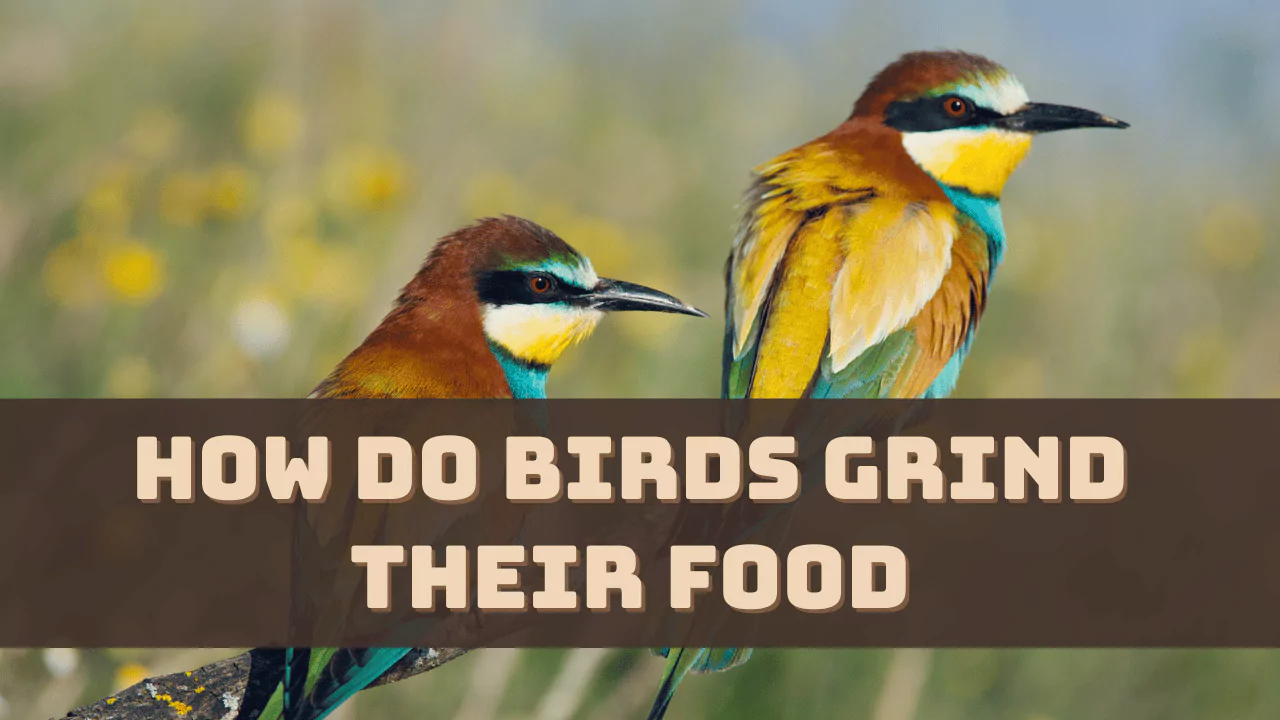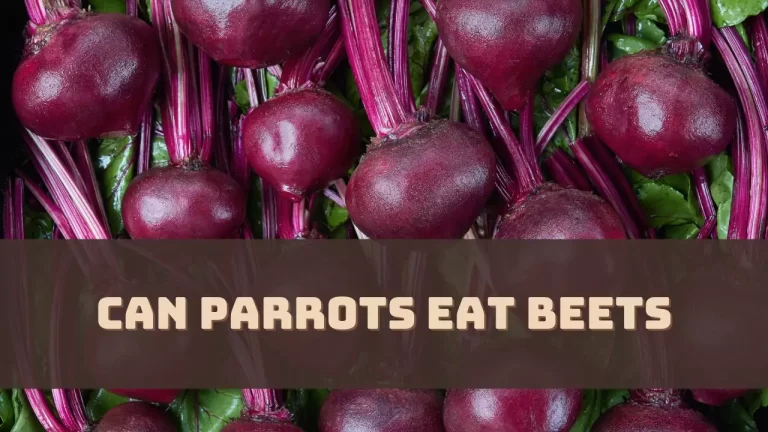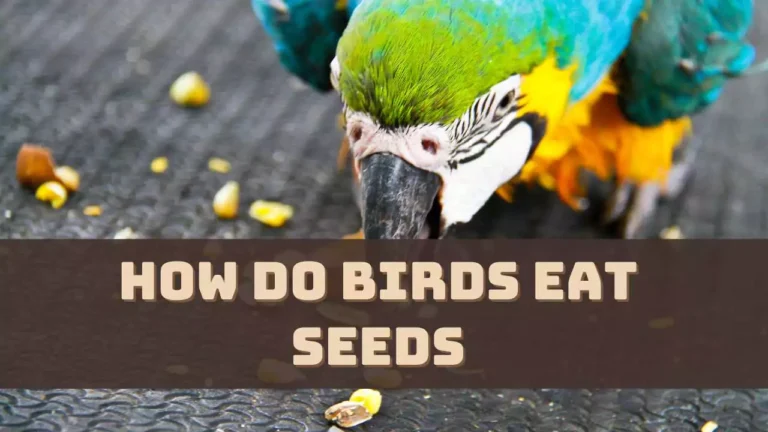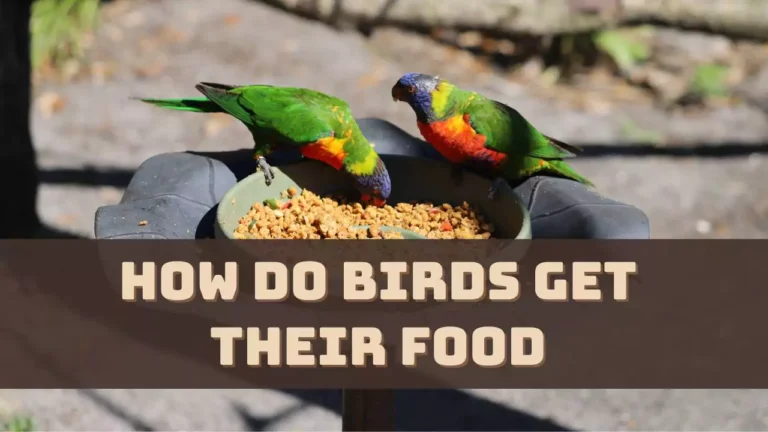Birds have a specialized organ called gizzard which helps them to grind up the food as they do not have teeth to chew it. The gizzard is a muscular organ that is present within the digestive system of the birds. This is a unique adaptation that helps them to digest the food smoothly.
So, let’s explore the mechanism that helps the birds to grind and digest the food.
How Do Birds Grind the Food?
They use several grinding techniques based on specific diet and environment. Some birds use the “anting” technique, where the bird is seen to rub or preen insects onto their feathers which helps to seep the chemical compound released by the insects deep into the skin, and it also eliminates parasites from their skin. Some birds are also seen to have a direct food grinding approach, where using a combination of pecking and pounding, they break down the food items.
Birds put into use their strong beaks and neck muscles to extract seeds or even open nuts. Birds like eBlue Jays are seen to use their beak first to crack open the nuts and shells and then use the tongue to extract the meat. The food reaches the gizzard where the ultimate grinding process takes place.
What Factors Affect the Grinding Process?
The grinding process in birds helps to extract the nutrients from the food but it is also affected by diet, beak anatomy, and habitat
Digestive Process in Birds
Birds have the capability to efficiently digest the food through a unique digestive system. Here’s is the basic understanding of the digestive process seen among birds:
Break Down of Food
The anatomy of the bird’s beak helps them to savor different types of food items and the choice varies from one species to another. Birds use their break to pick up and eat seeds, and insects or tear open meat, or crack and crush nuts, which is crucial for the grinding and processing of food.
Mouth and Saliva
As the food enters the oral cavity of the bird, saliva is released which contains amylase. Thus, the digestion process of carbohydrates begins in the mouth before it reaches the stomach. Saliva makes the food slippery and eases the pathway to slide down the esophagus tract.
Crop Helps in Food Processing
Birds have a food storage compartment located in their digestive system and this is called the crop. This is a temporary storage for food where it gets softened and then enters the gizzard. Birds do not get affected even if they consume a large amount of meal, as they can store this food in their crop and later digest it at their own pace. Here the food gets broken down into smaller and simpler pieces with the help of enzymes which aids in digestion.
Role of Gizzard
In the bird’s digestive system, a muscular organ can be found which is called the gizzard, it helps in grinding and is located between the crop and intensive. This organ has small stones or grit which help in the food grinding process. As soon as the food enters the gizzard, strong muscular contraction occurs and grinding the food against the grit.
Role of Grit
Grit are small, hard particles like stones that are consumed by birds intentionally to help in the grinding process. When the birds swallow small stones they reach the gizzard and accumulate there. After the food arrives, these grits assist in the mechanical grinding of the food. These are also known as gastroliths and not just normal stones seen lying around in the environment.
Enzymes Helping in Digestion
Enzymes help to break down complex molecules into simple forms which are absorbed by the body in the form of minerals and vitamins. Carbohydrates, fats, and proteins are digested by the enzymes amylase, lipase, and protease, which help in the extraction of nutrients.
Small and Large Intestine
The food is turned into chyme after it passes through the gizzard and goes through the pyloric opening into the duodenum. The chemical digestion takes place in the small intestine of the bird which makes it easier to absorb the nutrients. Various enzymes are secreted by the intestines which make it easier for the chyme to break down. The accessory organs in this process are the pancreas and liver.
Assimilation also takes place in the small intestine, where the nutrients are absorbed into the bloodstream. As the indigestible waste proceeds to the large intestine, essential minerals and water is reabsorbed and then the waste is released through the cloaca.
Why Do Birds Eat Rocks?
Birds eat rocks which are called grits and these aid in digestion to grind food. It also supplements the bird with minerals, as traces of minerals and nutrients can be found in the birds. It also helps to improve the health of the bird by dislodging the internal parasites.
How Do Birds Select Gizzard Stones?
Birds swallow small pebbles called gizzard stones, grits, or gastroliths, which assist in the grinding process of the food. These stones enhance the grinding power of the muscular stomach. Birds can either accidentally swallow these stones or purposefully while they are feeding. The seed-eating birds are mostly seen practicing the grit ingestion process. The selection of these grits is based on availability, size, and composition. In the case of smaller birds, they swallow sand grains, and larger birds like ostrich, swallow stones that are an inch in diameter.
How are the Grit Stones Replaced in Birds?
Birds have the capability to replace these gizzard stones, either they are taken out of the oral cavity, regurgitated, or excreted through the cloaca. Due to the regular process of grinding these stones become smaller and smoother, and so they need to be replaced from time to time. These grits can either be replaced frequently or after a week or month, based on the availability. Specific-sized stones are retained by the bird for a long time and the range varies based on species and individual diet.
What are the Common Gizzard Ailments Seen in Birds?
Birds often suffer from impaction or blockage of gizzards which can lead to illness or even death of the bird. This can occur due to intake of poor-quality food, and swallowing toxic or artificial material. They also get affected by various fungal diseases.
Do All Birds Need Grits for Grinding Food?
No, all birds do not swallow grits or stones to assist in the digestive process, rather these birds have developed their digestive organs so that the powerful stomach acids are enough to break the food material instead of using gastroliths.




